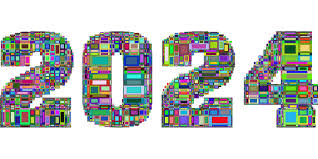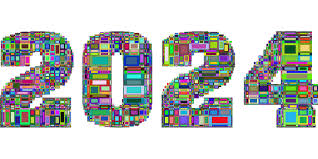 What caught our attention in 2024 in the older adult aging and health tech market?
What caught our attention in 2024 in the older adult aging and health tech market?
By the end of the year of 2024, heading into CES 2025, AI, or at least the term ‘AI’ has caught the eye of all, from scammers to overpriced startups to overspending investors. It all is reminiscent of previous years of hysteria over the web, the cloud, voice, and so on. As we head towards CES 2025, where an enter new class graduates into the booths and brouhaha, here is a look back at 2024’s most notable blog posts:
The Senior Living Industry is Flummoxed by Aging in Place. Is aging in place a smart strategy? Here we go again. In a brand new and similarly rosy article in the Wall Street Journal, more of the same mediocre advice is offered about how to prepare. Have a frank talk with family members. Maybe do some home modifications (those rickety stairs? Or a $20,000+ elevator), or address that lengthy distance from a supermarket? Maybe the 3-4% of older adults with long-term care insurance will pay for home care that averages $24,000/month for round-the-clock care. Hmmm. Or voice-activated devices, says an AARP exec, will be helpful for his long-distance aging parents. Says a family, we want Mom to stay in her house, and so we pay $4000 per month for care, because staying in her house is keeping her alive. Really. Read more.
AI is working today in Senior Living and Care. Exceeding expectations in every way. The next report was going to be titled – “The Future of AI in Senior Living” but that was so yesterday. One 2023 document, The Future of Artificial Intelligence in Senior Living offered up the categories where it would/could be useful – including in remote home monitoring, and its ‘emerging’ categories of AI solutions for seniors and senior living communities. The report referred to a 2023 study about how an AI algorithm could predict patients at highest risk for readmission to the hospital – using multiple data sources as inputs. No surprise – the algorithm’s recommendations were used, and the predictions and care recommendations enabled a 21% reduction of rehospitalization. As the interviewees in the final report noted, AI can help a resource-constrained industry. Read more.
Investors and providers must transform AgeTech market from products to suites. The population is aging – and still, the tech solution market is immature. Investors of all types demonstrate interest in a product here and an offering there. Competitions highlight product winners; money is raised for one product at a time. One reason for the immaturity of the market is the behavior of buyers. Senior living companies buy a product for this and an offering for that. The future is predicted to incorporate new technology like AI – but that is always ‘in the future.’ Everyone agrees that AI could enhance retirement living and healthcare, but deployment of new offerings is always described as in the future. No other software categories in tech history – consider office, finance, supply chain – remain a laundry list of point products when markets expect suites. Read more.
As the year progresses, the older adult population gets the innovators’ attention. As it should be, given the swelling older adult market, growing visibility with investors, and increasing attention from the federal government. Rock Health break out the 65+ in its surveys of health tech ownership. Surveys show that Americans prefer to age in their own homes, also known as aging in place. Pew Research notes that the Centenarian population will triple in the next 30 years, baby boomers are hitting ‘peak 65’ this year, and in just six years, all 72 million baby boomers will be 65+. Within that context, it will continue to be important to note new innovations that could improve their quality of life. Read more.
The Tech User Experience Needs a Reboot. Is the user experience deteriorating? Tech user experience experts focus on everyone except older adults. But there’s a problem: from AARP’s tech trends survey from 2024 and their 2023 guidance from AARP on inclusive design practices, it’s clear and as the AARP report notes, “No one prefers badly designed, over-complicated products.” Despite preferences, surveys show that today’s user experience for older adults is more problematic than ever. All are confronted with buggy software and frequent bug fix releases, such a problem on iPhones that an embarrassed Apple redirected software work towards fixing. And Google is no better with Pixel phones. Read more.
Five Trends that Matter for Older Adults and Caregivers in 2024. The 2024 Technology and Aging Market Overview is online. It provides new information and insights about trends that drive technology change for the older adult marketplace. They represent the context for understanding new technologies discussed and featured in the report. This year is in many ways unusual — the oldest baby boomer turns 78, AI investment and interest reached fever pitch, and the annual CES show had its highest turnout, with AI everywhere since 2020. These trends include the possible future role of AI, that can help address workforce issues and provide benefit over the coming months and years. Read more.
And then there were: Eighteen Technologies from CES 2024. The press releases signal a busy time in Las Vegas. Viewed from afar, drowning in press releases, it is clearly a nearly fully revived CES 2024. With 130,000 attendees it’s down a bit from 2020’s peak of 175,000. From electric motorcycles and low-profile automobile antennas, the unfolding TV to robotic pool cleaners and lawn mowers and construction, it sounds like it was a noisy place. Some folks think this is a consumer show, but that was the long-ago Consumer Electronics Show. So many entrants in the AgeTech, accessibility and health categories seek visibility and possible global reach. First Ten. And eight more.
See the 2024 Research reports:
Market Overview: Technology for Aging
The User Experience Needs an Upgrade
The Future of AI in Senior Living and Care
